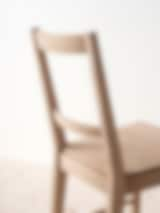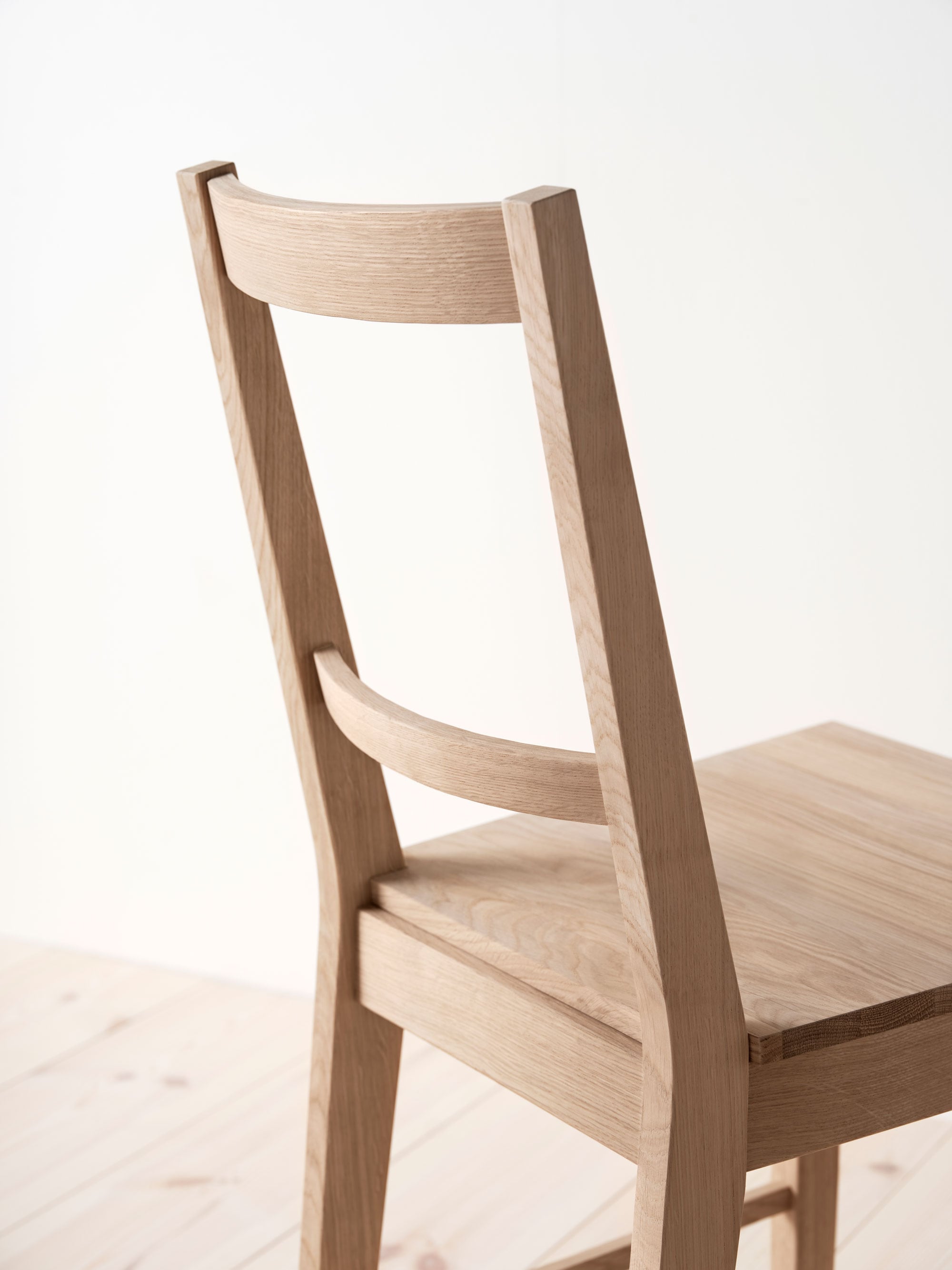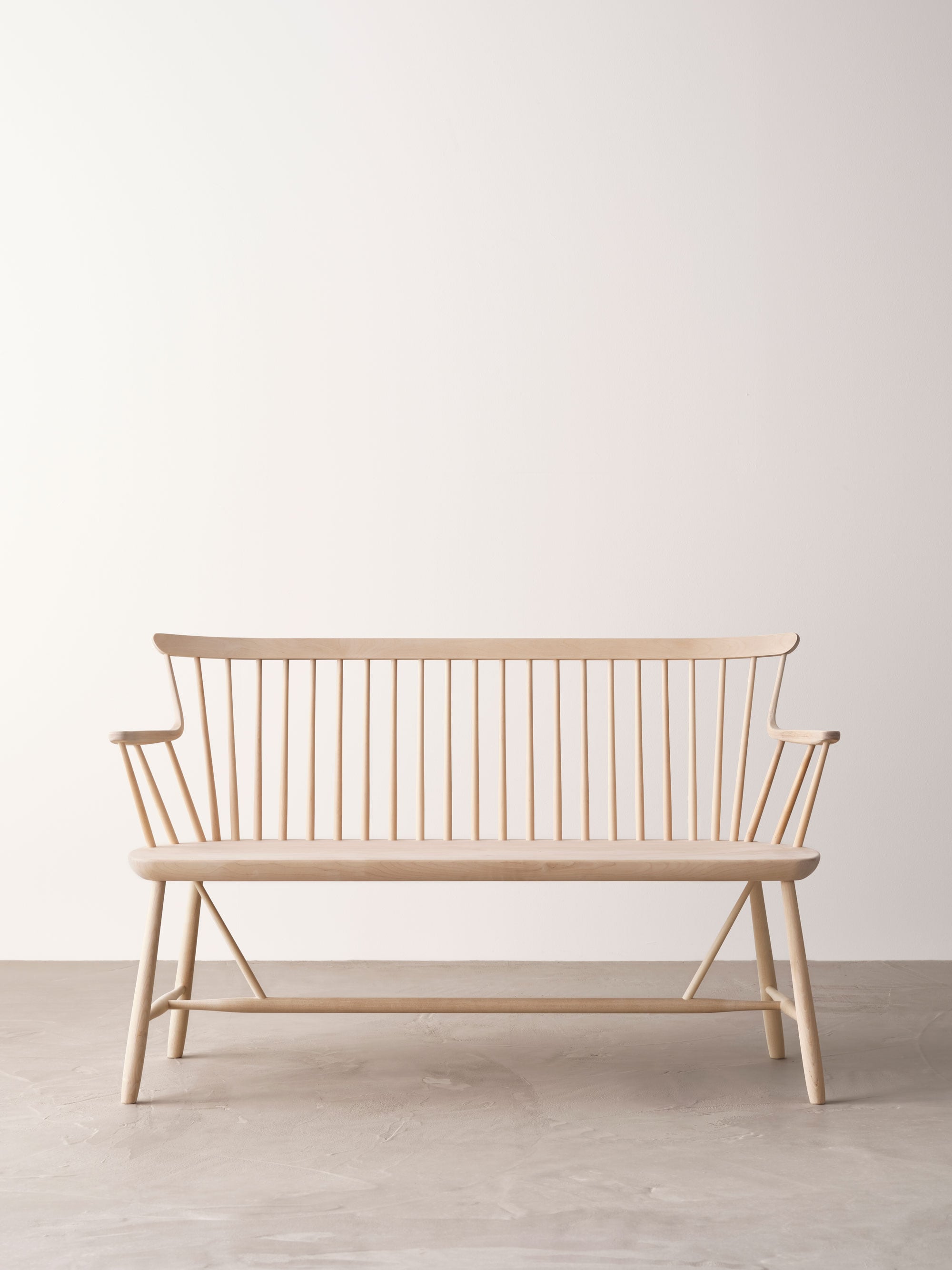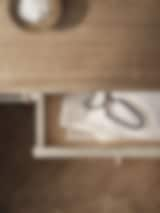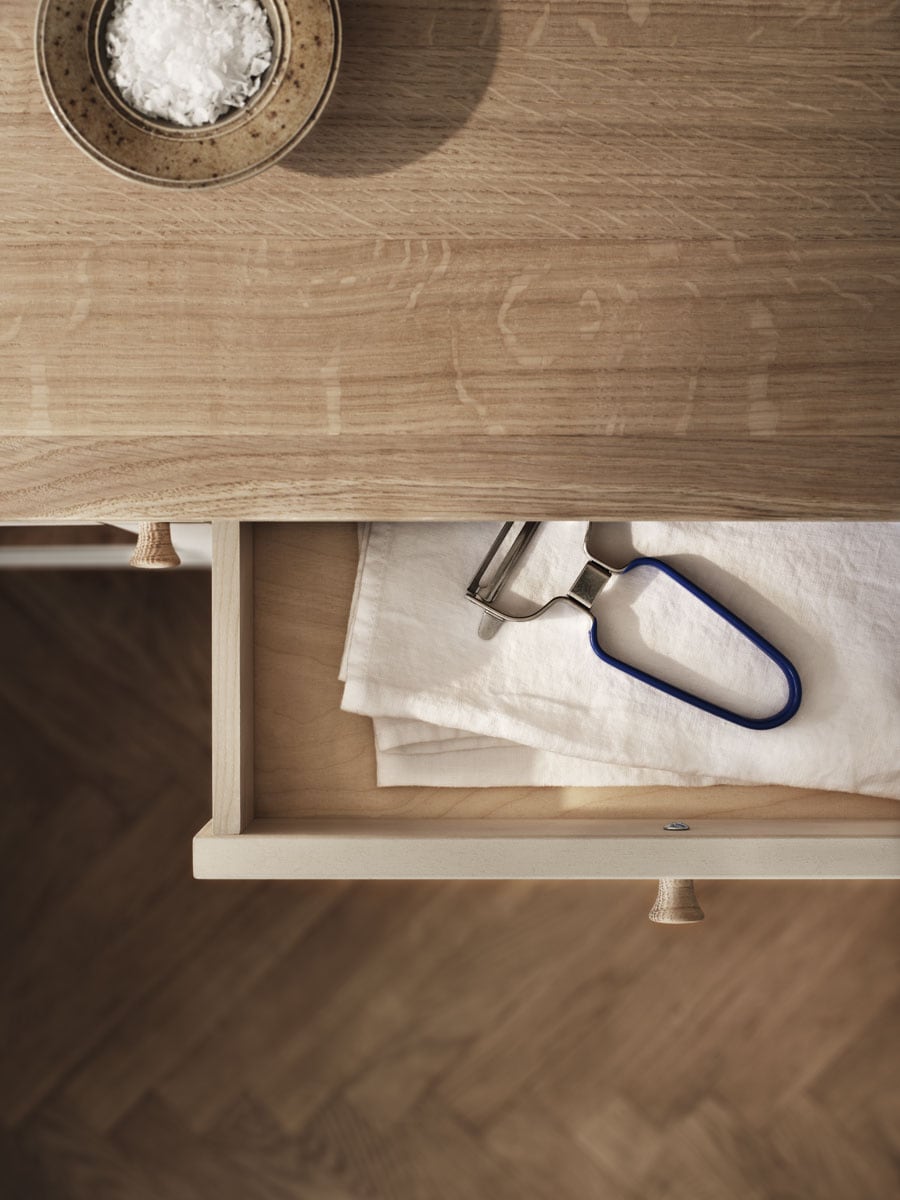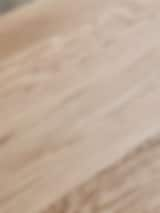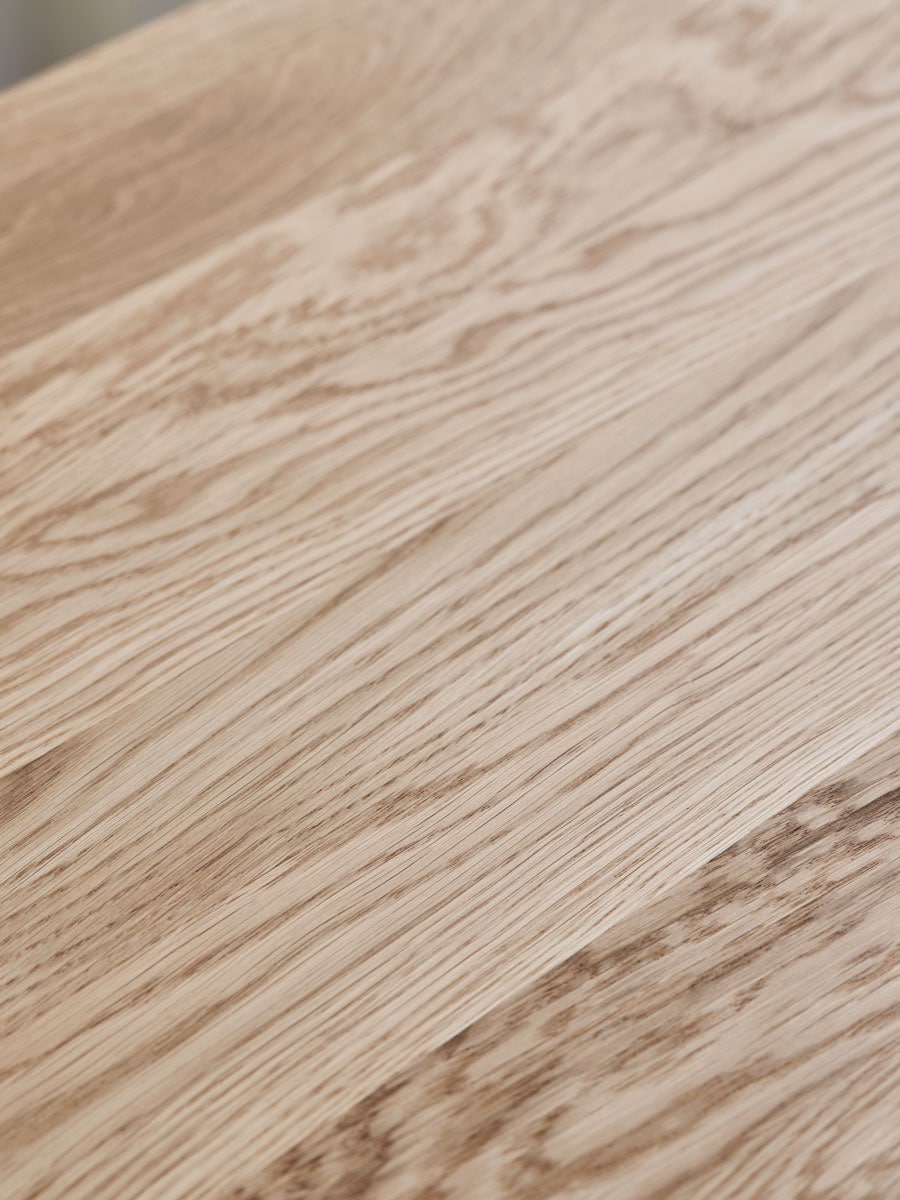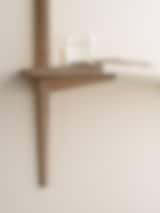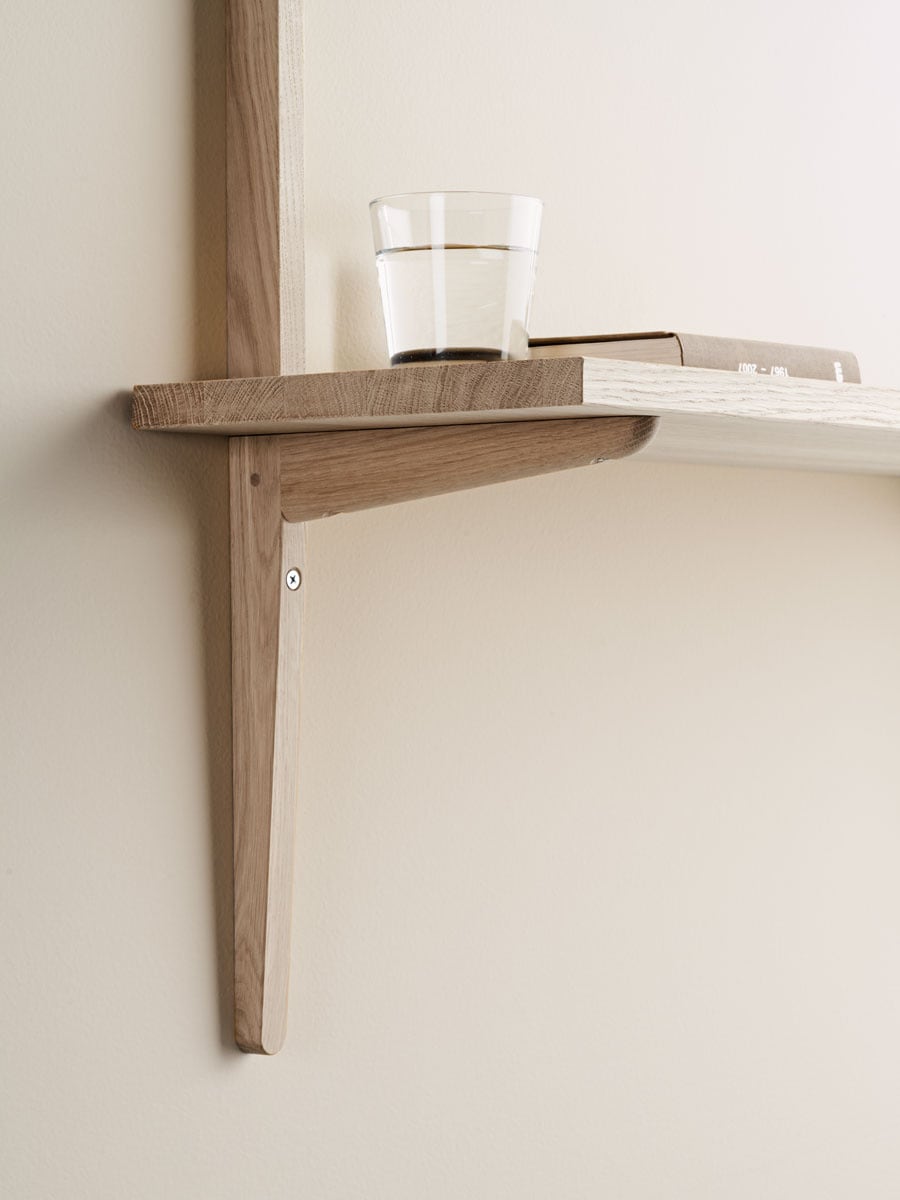Norrgavel’s furniture is mainly made in oak and birch, but beech is also used in some cases where most appropriate. We mainly use “open” surface treatments (soap, oil, tinted oil and egg oil tempera). This means the wood keeps living and breathing. Surfaces like this need a certain amount of maintenance but if you follow our care advice, your furniture will have a long life and change beautifully as it ages.
Wood
Solid wood furniture
General advice for wood
Wood is an amazingly sustainable material and if you care for it regularly, it will stay looking beautiful for a long time to come.
» Do not place solid wood furniture in direct sunlight, against a radiator or in spaces that experience major changes in heat and moisture.
» Use trivets or mats under hot pans and dishes placed on wood surfaces.
» Wipe up liquid spills immediately.
» Check that fittings and screws are still tight from time to time.
Remember that extra leaves (for dining tables) that are not in constant use will end up a different colour from the table top due to differing rates of wear and the way that wood ages/darkens over time.
Tip! Dents from pressure and knocks can be repaired by brushing hot water on the mark so that the wood expands. For deeper dents, place a damp cloth on top of the mark. Iron gently over the cloth with a hot iron. Sand with fine sandpaper the next day. Note this applies to “open” surface treatment, i.e. not to lacquered or varnished furniture.
Note! Iron can leave black marks on oak tabletops. The tannin in oak reacts with the iron and marks of this type are very difficult to remove. This means you should never place a cast iron pan or casserole directly on an oak table.
Tip! Use appropriate stain removal products for wood if you need them. This helps to remove discolouration and marks on wooden furniture on untreated, soaped or oiled surfaces. Then surface treat the wood with your desired surface treatment product.
WOOD – A LIVING MATERIAL
Because wood is a living material, it will move, i.e. shrink or swell, depending on the humidity of the surrounding air. Wood is its smallest size after a long winter in a centrally heated room with dry air. It is widest in autumn. The movements in the wood never stop completely but will tail off somewhat over time. The fact that wood moves can be clearly seen in the case of drawers, for example, that slide best in the winter, or in gaps between door hinge and frame that are narrower in summer/autumn.
Note! Norrgavel’s dining tables (Extendable Table, Wide Dining Table & Round Dining Table) clearly show that wood moves in that the surfaces between the table top and the extra leaf can become convex in the winter months. In other words, the table top and the extra leaf will meet in the middle but there will be a slight gap at the outer edges. The leaves will return to their original shape in the summer.

